| Subcompact car; Built in Mexico |
|
|
| Good condition price range: $3,500 – $16,200* |
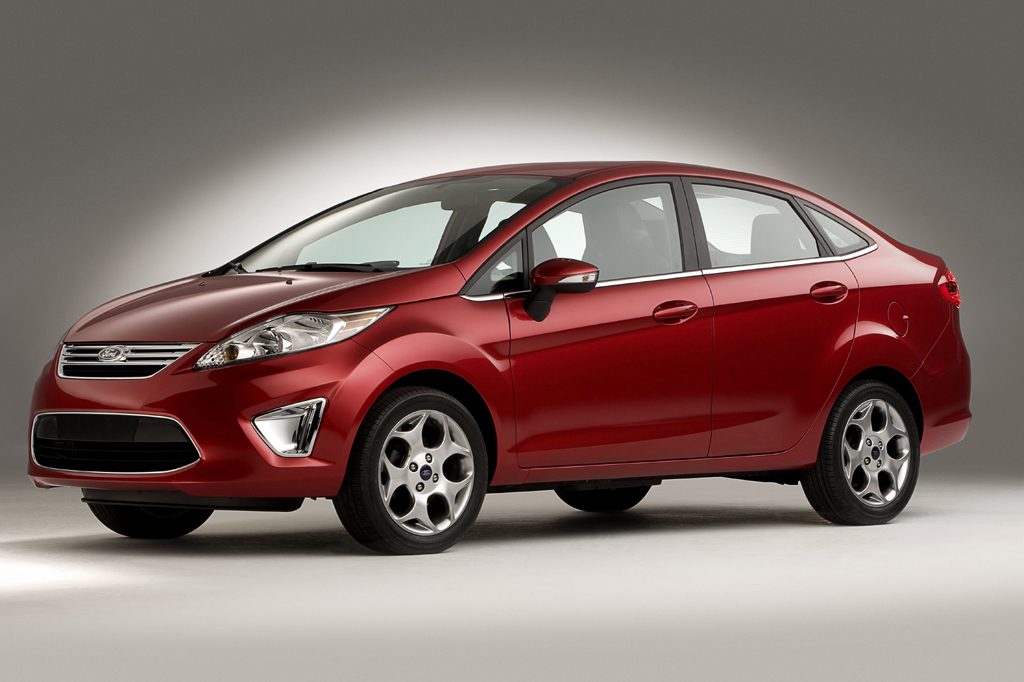
2011 Ford Fiesta Front
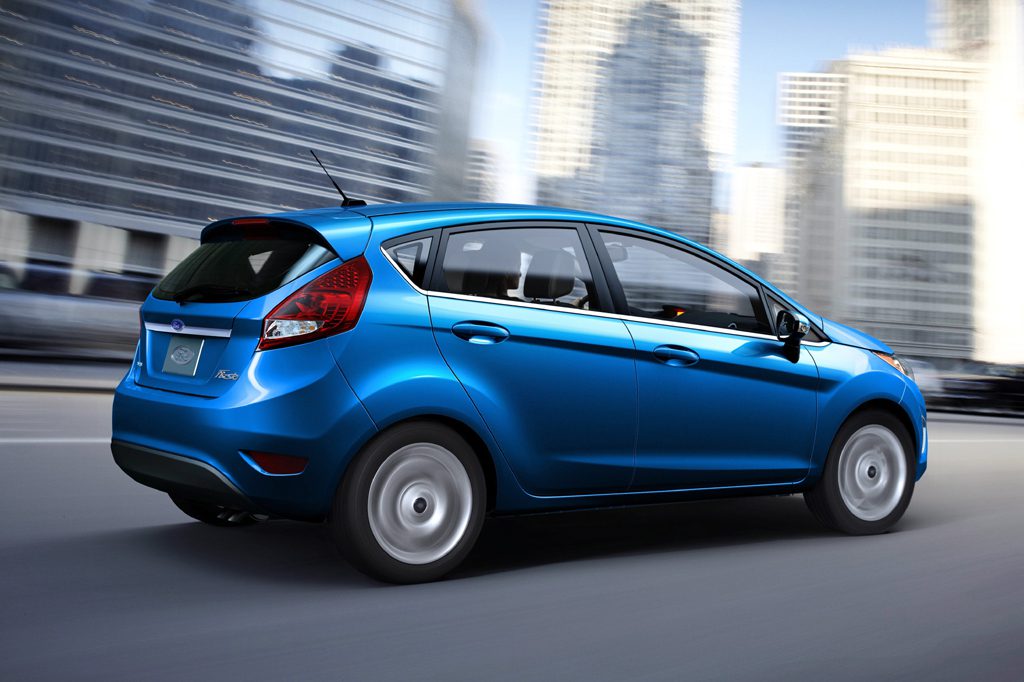
2011 Ford Fiesta Rear
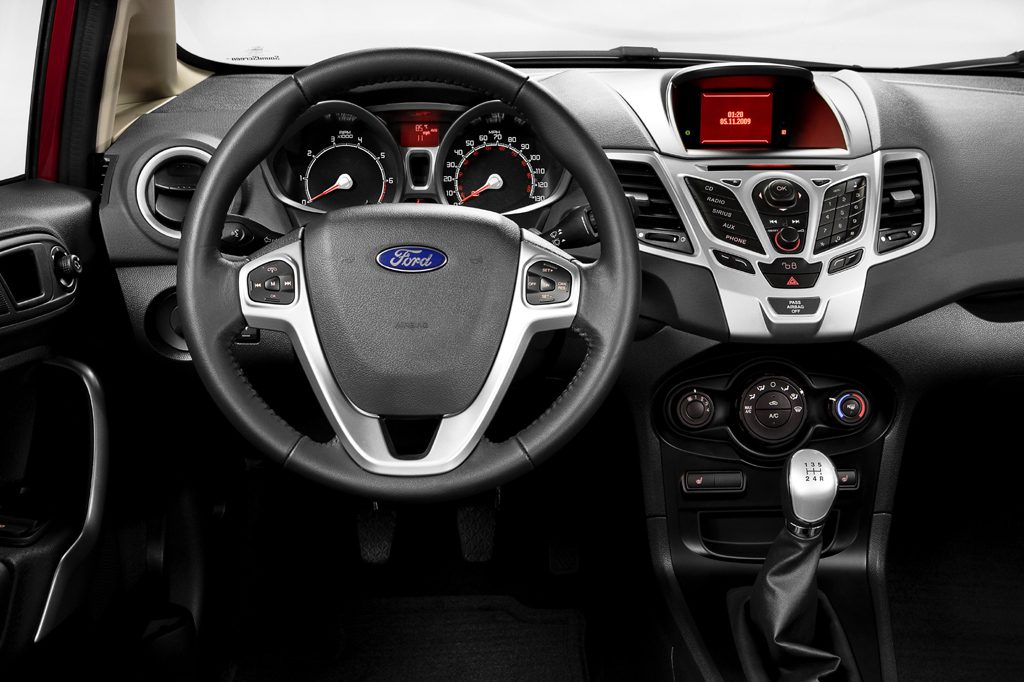
2011 Ford Fiesta Interior
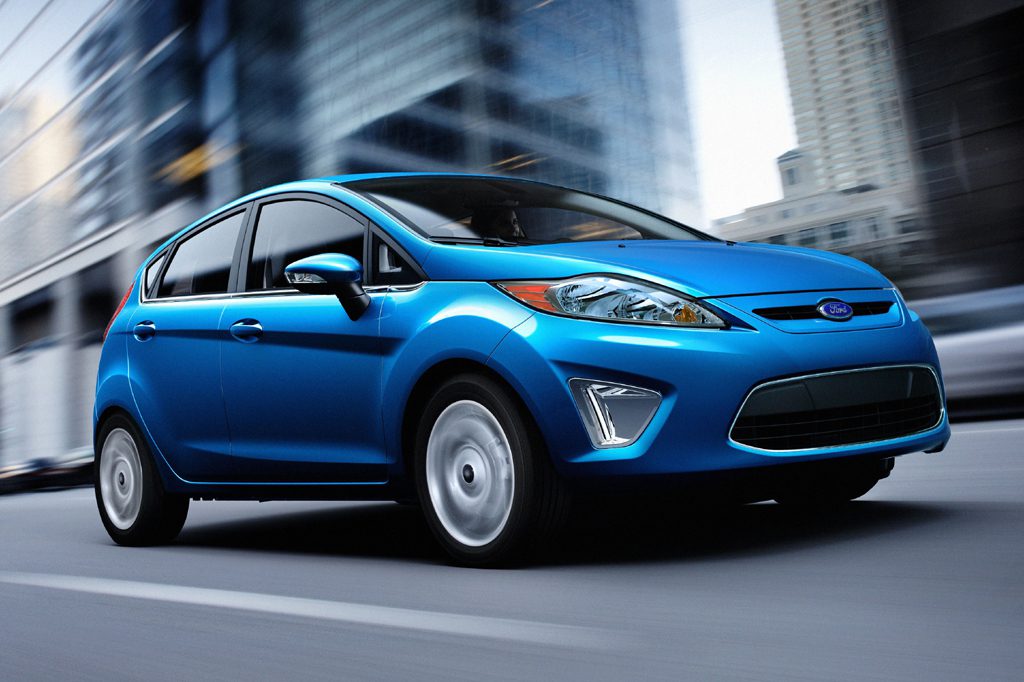
2011 Ford Fiesta Front-2
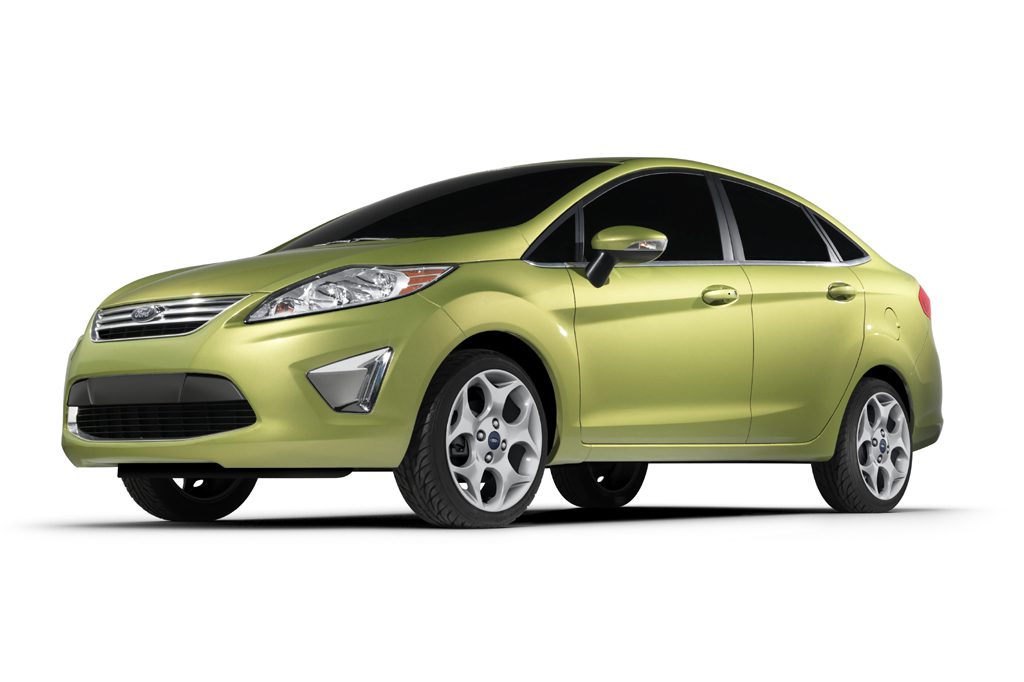
2011 Ford Fiesta Front-3
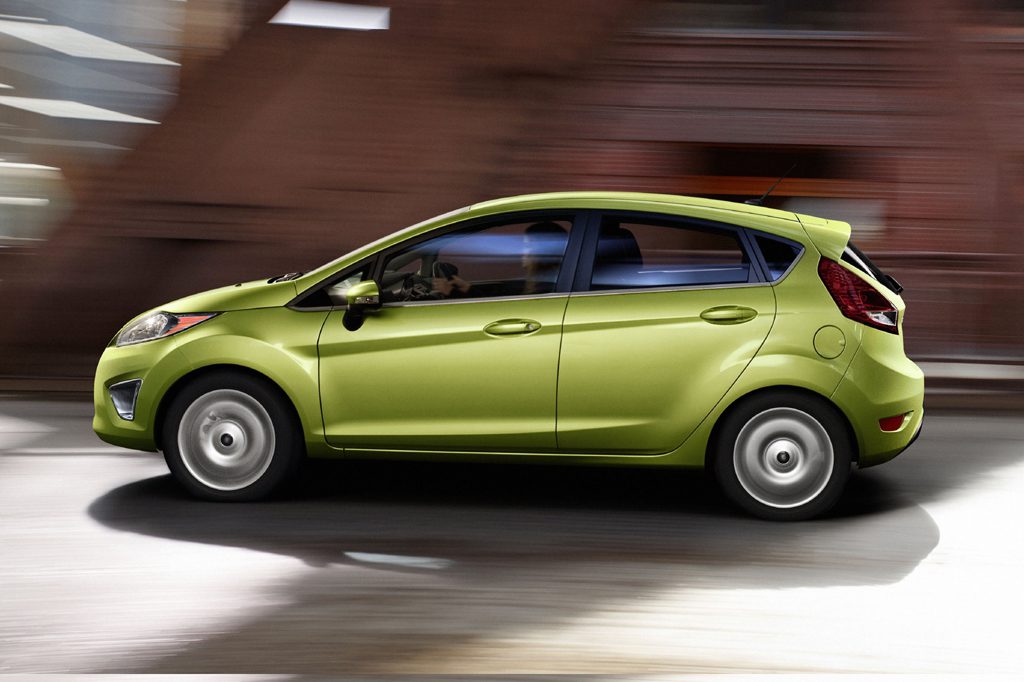
2011 Ford Fiesta Profile
| Pros: |
|
| Cons: |
|
Ford promotes the Fiesta as a sporty, upscale subcompact. In that regard, it hits the mark. When fitted with the automated-manual transmission, fuel economy may well top the class, but low-speed acceleration suffers. Fiesta doesn’t have nearly the passenger room and cargo versatility of most competitors, but Ford countered with availability of several unexpected class features, such as heated seats and leather upholstery. If overt practicality is secondary to style and substance when looking for a used subcompact, the Best Buy (2011-12) Fiesta should be on your shopping list.
Overview
Ford’s little Fiesta made its U.S. debut for 2011, after being sold in other markets for a couple of years. This subcompact car came as a four-door hatchback or a four-door sedan. Hatchbacks were offered in SE and SES trim levels, while sedans came in S, SE, and SEL versions. Sole engine for all models was a 120-horsepower, 1.6-liter four-cylinder that teamed with either a five-speed manual gearbox or a PowerShift six-speed dual-clutch automated manual transmission, which behaves much like an automatic. S and SE models had standard 15-inch wheels. SEL and SES versions rode on 16-inch tires, with 17s optional.
Standard safety features included antilock braking, traction control, an antiskid system, curtain side airbags, front side airbags, and a driver’s knee airbag. Ford claimed the Fiesta’s seven-airbag total led its class. A tilt/telescopic steering wheel, height-adjustable driver seat, and capless fuel filler were standard. Among the available features were Ford’s Sync voice-activated control for cell phones and MP3 players, a sunroof, keyless engine start, leather upholstery, and heated front seats. A number of dealer-installed dress-up accessories were offered as well. Fiesta competitors included the Honda Fit, Nissan Cube, Mazda 2, and Suzuki SX-4.
Yearly Updates
| 2012 Fiesta Except for minor trim changes and new options, changes were modest for the 2012 Ford Fiesta in its second season on the U.S. market. Two new interior style packages were offered, and an expanded premium sport appearance package for SES hatchbacks debuted, featuring blacked-out accents. All models now had spotter mirrors integrated into the exterior mirrors. Some 17-inch optional wheels were no longer available. Newly available AppLink software allowed certain applications for data-plan-enabled smart phones to be controlled by voice and the Sync system. A Super Fuel Economy (SFE) package combined the automatic transmission with a rear spoiler, side air deflectors, underbody shields, and low-rolling-resistance tires. |
| 2013 Fiesta Fiesta saw a lineup shuffling and reorganization for 2013. While equipment was generally the same, the names were slightly different. |
| 2014 Fiesta Fiesta added two new engines to the Fiesta line for 2014. A turbocharged 1.0-liter 3-cylinder with 123 horsepower was aimed at those who wanted better fuel economy. A turbocharged 1.6-liter 4-cylinder with 197 horsepower powered the sporty ST model that was new to the U.S. that year. |
| 2015 Fiesta Save for some minor trim revisions, Ford’s subcompact car stands pat for 2015. |
